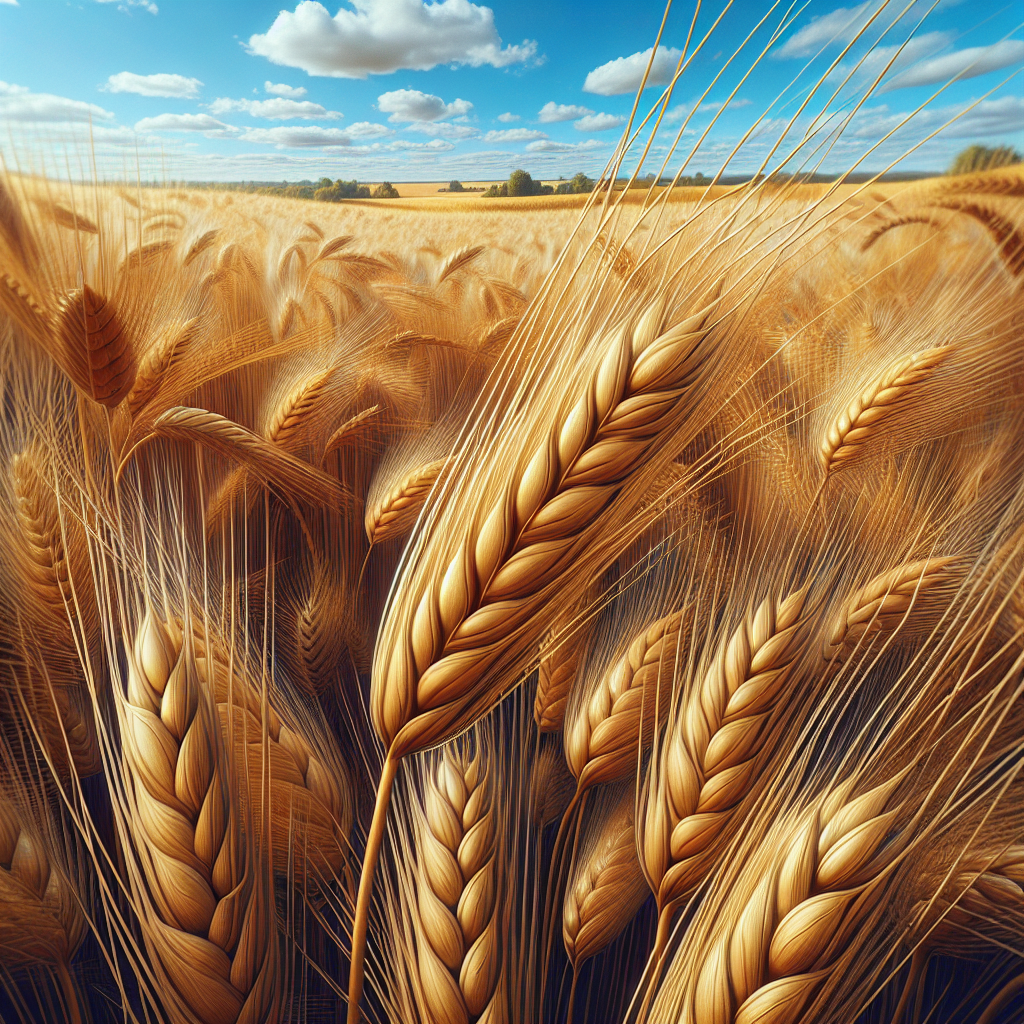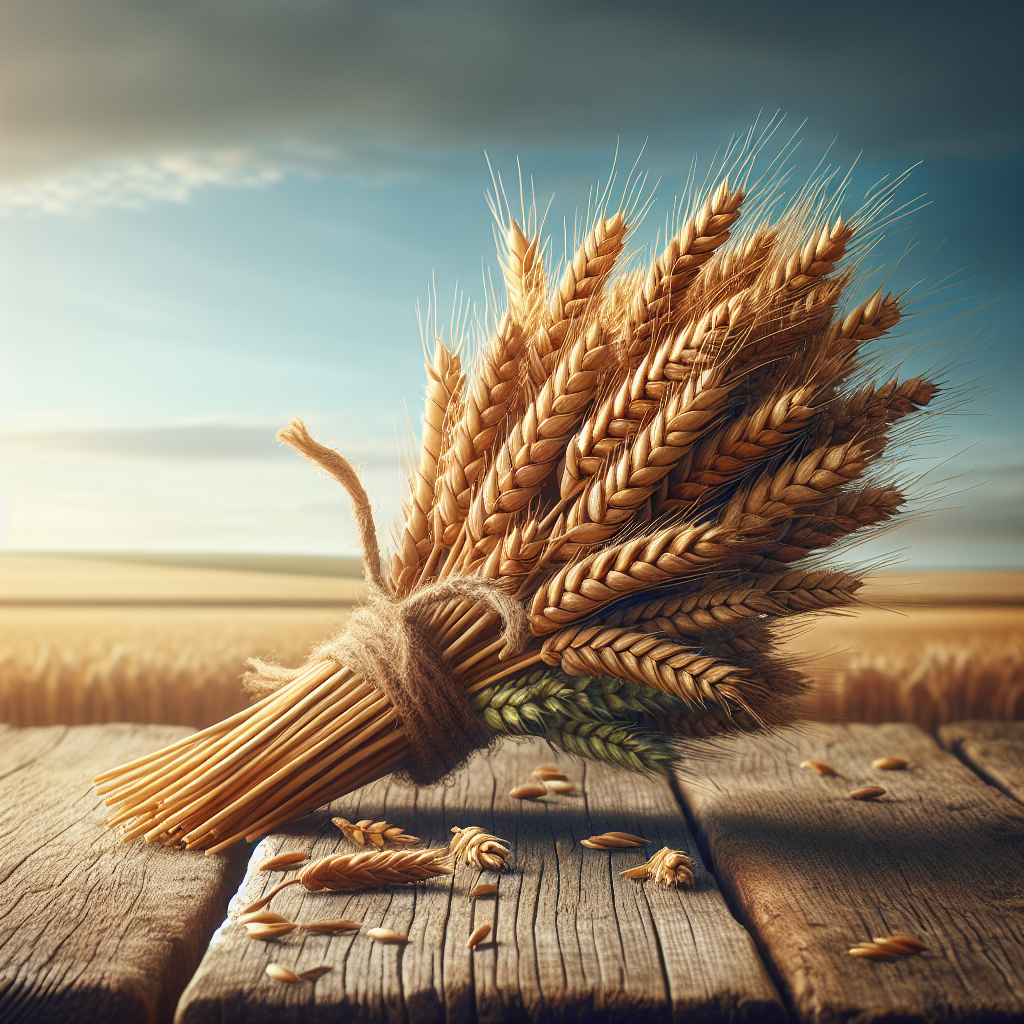
Discover the Secrets of Rye: A Grain of Many Uses
Share
Welcome to the fascinating world of rye, a grain that has shaped cuisines and cultures across the globe. Rye is a hardy cereal known for its deep, earthy flavor and its ability to thrive in harsher climates where other grains might fail to prosper. This versatility has made rye a staple in many traditional diets, particularly in Europe and parts of Asia. From the dense, nourishing breads of Germany to the crisp, flavorful crackers of Scandinavia, rye has been embraced for its unique culinary properties and health benefits.
As we delve into the secrets of this remarkable grain, we invite you to explore how rye can transform your cooking and contribute to a balanced diet. Whether you are a seasoned chef or a home cook looking to experiment with new ingredients, rye offers a world of possibilities. And while you're discovering the many uses of rye, why not revamp your style with Therjsnews? Discover the latest trends and elevate your wardrobe today. Shop now for fashion that speaks volumes!
The journey through the uses of rye is not just limited to the kitchen; it extends to the field of health and nutrition, owing to its rich fiber content and presence of essential minerals. We will uncover the roles that rye plays beyond the plate, including its environmental benefits and historical significance. Prepare to embark on a grain adventure that promises to enrich your understanding and appreciation of rye.
Historical Significance of Rye Cultivation
The cultivation of rye is steeped in history, with its origins tracing back to the wild grasses of Turkey and the surrounding regions over 10,000 years ago. Initially considered a weed, it was often found growing among wheat and barley fields. However, its resilience in cold and poor soil conditions soon made it a favored crop among farmers, particularly in regions of Central and Eastern Europe. As agriculture spread, rye's popularity grew due to its adaptability and its ability to withstand harsh winters and rocky terrains where other grains could not survive.
In the Middle Ages, rye became a cornerstone of European agriculture and cuisine. It played a critical role in feeding the population, especially during times of scarcity. The grain was used to make bread that was darker and denser than wheat bread, a staple food for the lower classes. Its endurance amidst difficult climates and its high yield made it an invaluable resource in sustaining communities through the unpredictable medieval period.
Another significant chapter in rye's history is its association with the production of spirits. Countries like Russia and Poland have long traditions of distilling rye to create potent beverages such as vodka and whiskey. This use of rye highlighted its economic importance, extending its value beyond mere sustenance to become a cultural symbol and a trade commodity.
Today, while other grains like wheat and rice may dominate global agriculture, rye's historical significance cannot be overstated. It remains an important crop in many Northern and Eastern European countries, continuing to contribute to cultural culinary traditions and sustainable farming practices.
Nutritional Profile and Health Benefits of Rye

Rye is not only a hardy crop but also a powerhouse of nutrition, offering a plethora of health benefits. Its grains are packed with essential vitamins, minerals, and phytonutrients. Rye is an excellent source of dietary fiber, particularly a type called arabinoxylan which is known for its high antioxidant activity. The fiber content contributes to improved digestion, helps in the prevention of gallstones, and can aid in weight management by promoting a feeling of fullness.
Rich in magnesium, rye helps in the regulation of glucose and insulin levels, thereby reducing the risk of type 2 diabetes. It is also a good source of phosphorus, which plays a pivotal role in bone health. Additionally, rye contains phenolic compounds that exhibit antioxidant properties, protecting cells from oxidative stress and potentially reducing the risk of chronic diseases such as cancer, heart disease, and inflammation-related conditions.
The presence of lignans in rye is particularly noteworthy. These plant compounds are converted by intestinal bacteria into enterolactone, which is believed to have cancer-protective effects, especially against hormone-dependent cancers such as breast cancer. Moreover, rye has a lower glycemic index compared to many other grains, making it a smarter choice for maintaining blood sugar levels.
Consuming rye as part of a balanced diet can also have cardiovascular benefits. It helps lower LDL cholesterol levels, which is beneficial in the prevention of heart attacks and strokes. The unique nutritional profile of rye establishes it as a grain that not only sustains but also enhances health, making it a valuable inclusion in the diet for those mindful of their health and well-being.
Rye in the Kitchen: Culinary Uses and Recipes

The versatility of rye extends into the kitchen, where it stars in a variety of culinary creations. Often recognized for its robust, slightly sour flavor, rye flour is commonly used in bread-making. Rye bread, including the dense, dark pumpernickel, is a staple in many cultures. It can also be used to make crispbreads, which are popular in Nordic countries and serve as a healthy, high-fiber snack or the base for canapés.
Beyond bread, rye flour can be a nutritious alternative in pancakes, muffins, and cookies, adding a distinct depth of flavor and nutritional benefits. When used in baking, rye flour is frequently combined with wheat flour to help the dough rise, as rye's lower gluten content can make for a denser product.
Whole rye grains, often referred to as rye berries, can be cooked similarly to other whole grains like rice or barley. They make an excellent base for hearty salads, pilafs, or can be added to soups and stews for added texture and nutrition. Crushed rye, known as rye flakes, is another form that is perfect for hot breakfast cereals or granola.
For those looking to explore traditional recipes or innovate with new ones, rye offers endless possibilities. Whether it's in the form of a sourdough starter giving rise to an artisanal loaf, or as an addition to a robust winter soup, rye's culinary uses are as diverse as they are delicious. Embracing rye in the kitchen not only enriches the flavor profile of dishes but also contributes to a well-rounded, health-conscious diet.
Rye's Role in Sustainable Agriculture

Rye's adaptability and hardiness make it an excellent crop for sustainable agricultural practices. Its deep root system allows it to thrive in poor soils where other grains might fail, making it a valuable crop in the rotation to improve soil structure and fertility. Its ability to grow in a wide range of climates and resist many diseases contributes to reduced need for chemical inputs, such as fertilizers and pesticides, which aligns with organic farming principles and promotes environmental health.
In addition to its ecological benefits, rye plays a significant role in conservation tillage systems, including no-till or minimum tillage practices. By leaving the previous season's crop residue on the fields, farmers can minimize soil erosion, improve water retention, and enhance biodiversity. Rye, often used as a cover crop, can protect and enrich the soil during the off-season, preventing nutrient runoff and weed growth, and breaking pest and disease cycles.
Companion planting is another sustainable technique where rye is paired with other crops. This polyculture approach can increase land use efficiency and help control pests naturally. Rye's inclusion in a diverse cropping system can thus lead to a more resilient agricultural ecosystem, which is crucial in the face of climate change challenges.
As consumer awareness grows regarding the environmental impact of their food choices, the demand for sustainably produced grains like rye is likely to increase. By supporting farming methods that prioritize ecological balance and soil health, rye becomes not just a crop of the past, but a grain for the future, integral to the advancement of sustainable agriculture.
Innovative Rye Products and Market Trends

The market for rye-based products is witnessing a renaissance as both consumers and manufacturers rediscover the grain's versatility. Innovative food products that incorporate rye are gaining popularity, ranging from traditional rye breads with a modern twist to rye-based beverages like craft beers and whiskies that highlight the grain's robust flavor profile. Artisanal food producers are experimenting with rye in pastas, crackers, and even snacks, capitalizing on its rich taste and nutritional benefits.
With a growing consumer interest in whole grains and plant-based diets, rye fits perfectly into this trend. Its high fiber content and potential health benefits are attractive selling points. The food industry is also exploring the use of rye as a functional ingredient in fortified foods and as a base for plant-based meat alternatives. The unique properties of rye flour, such as its water-binding capacity, make it an excellent ingredient for creating meat-like textures.
On the market trend front, there is a noticeable shift towards rye-based artisanal and craft products. Consumers are increasingly seeking out authentic and sustainably sourced items, and rye's traditional image combined with innovative applications meets this demand. Additionally, the re-emergence of rye in the health food sector is being bolstered by research on its potential to manage weight, improve digestion, and lower the risk of certain diseases.
As the market for rye continues to evolve, it's an opportune moment to revamp your style with Therjsnews! Discover the latest trends and elevate your wardrobe today. Shop now for fashion that speaks volumes!
